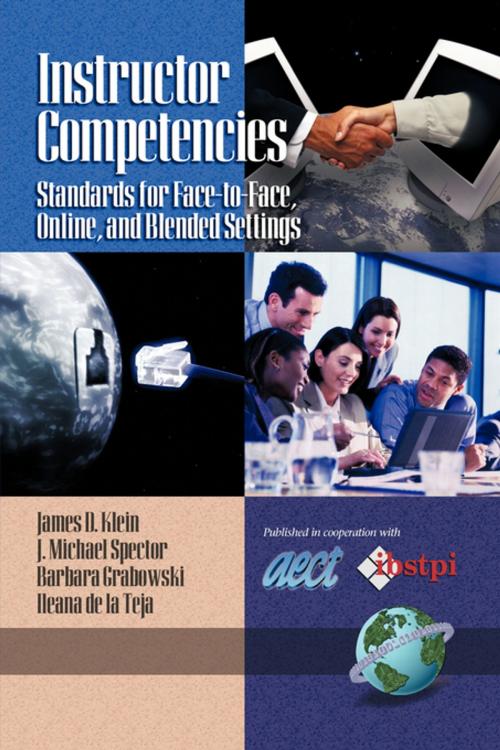Instructor Competencies
Standards for FacetoFace, Online, and Blended Settings
Business & Finance, Human Resources & Personnel Management| Author: | James D. Klein, J. Michael Spector, Barbara L. Grabowski, Ileana de la Teja | ISBN: | 9781607528869 |
| Publisher: | Information Age Publishing | Publication: | October 1, 2004 |
| Imprint: | Information Age Publishing | Language: | English |
| Author: | James D. Klein, J. Michael Spector, Barbara L. Grabowski, Ileana de la Teja |
| ISBN: | 9781607528869 |
| Publisher: | Information Age Publishing |
| Publication: | October 1, 2004 |
| Imprint: | Information Age Publishing |
| Language: | English |
This edition is not just a rehash of old, albeit classic and still important, stuff. Instead, it provides a fresh perspective on a topic of perennial interest for those working in the field that has been variously called training and development, human resource development, performance technology, and workplace learning and performance. The fresh perspective takes into consideration two additional instructor settings to the traditional facetoface environments that most instructors and trainers know that is, online and blended settings. These settings are, of course, becoming more critical as instruction moves beyond classroom settings to include virtual and combinations of classroom and other media delivery methods. The ibstpi instructor competencies match up well to Mapping the Future (Bernthal, Colteryahn, Davis, Naughton, Rothwell, & Wellins 2004), the current ASTD competency study of the field now known as Workplace Learning and Performance (WLP) and previously known as Training and Development (T&D). WLP is more than a new name for an old subject and represents a fundamental paradigm shift in what it means to be a professional in the field formerly known as training. WLP is all about getting improved performance and therefore improved results in organizational settings through planned and unplanned learning interventions. Instruction is thus a means to an end and not an end in itself. The ibstpi instructor competencies dovetail well with that philosophy.
This edition is not just a rehash of old, albeit classic and still important, stuff. Instead, it provides a fresh perspective on a topic of perennial interest for those working in the field that has been variously called training and development, human resource development, performance technology, and workplace learning and performance. The fresh perspective takes into consideration two additional instructor settings to the traditional facetoface environments that most instructors and trainers know that is, online and blended settings. These settings are, of course, becoming more critical as instruction moves beyond classroom settings to include virtual and combinations of classroom and other media delivery methods. The ibstpi instructor competencies match up well to Mapping the Future (Bernthal, Colteryahn, Davis, Naughton, Rothwell, & Wellins 2004), the current ASTD competency study of the field now known as Workplace Learning and Performance (WLP) and previously known as Training and Development (T&D). WLP is more than a new name for an old subject and represents a fundamental paradigm shift in what it means to be a professional in the field formerly known as training. WLP is all about getting improved performance and therefore improved results in organizational settings through planned and unplanned learning interventions. Instruction is thus a means to an end and not an end in itself. The ibstpi instructor competencies dovetail well with that philosophy.















